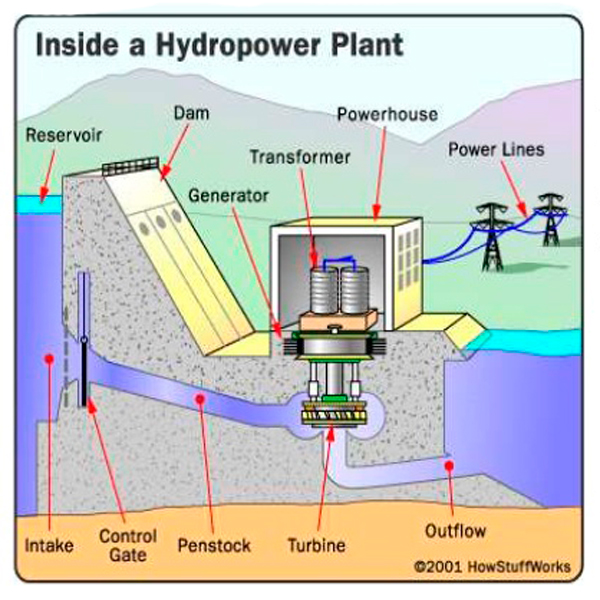What is a Synchronous Motor?
A synchronous motor is a type of AC motor that operates on the principle of synchronism. It consists of stator and rotor. When the stator is energised it creates a magnetic field and interacts with the rotor, causing it to rotate at a synchronous speed. Once synchronous motors are synchronized, they operate efficiently.
A synchronous motor is a type of AC motor that operates at a speed directly proportional to the frequency of current supplied. It helps the synchronous motor to maintain synchronous speed regardless of changes in load.
Unlike induction motors, which rely on the principle of electromagnetism and experience a change in speed due to a change in load. However, synchronous motors maintain their synchronous speed with the frequency supply irrespective of changes in load making them ideal for applications that require constant speed control such as clocks, timers, and various industrial processes.
The construction of a synchronous motor includes two main components: stator and rotor. The stator is the stationary part of the motor and consists of three-phase windings similar to the induction motor. While the rotor is the rotating part of the motor, it can be either a salient pole or cylindrical.
Synchronous motor works on the principle of interaction between the stator and rotor. When a three-phase AC supply is provided to windings of stator, they generate a rotating magnetic field (RMF) which interacts with the magnetic field of the rotor, locks the rotor and causes it to rotate at synchronous speed.
However, unlike induction motors, synchronous motors are not self-starting. At idle conditions, the rotor’s magnetic field experiences alternating torque due to the rotating magnetic field (RMF) of the stator which is insufficient to initiate the rotation of the rotor. To start the rotation, auxiliary methods such as damper windings or an external motor are used to bring the rotor up to synchronous speed before DC excitation is applied.
Working of Synchronous Motor:-
The working of a synchronous motor is based on the principle of synchronism. In this principle, the rotation of the rotor is synchronised with the frequency of the alternating current (AC) supply. Similar to other AC motors, synchronous motors also consist of a stationary part called the stator.
The stator contains wire coils, supplied with alternating current (AC) supply. When these coils are energised with an AC supply, it produces a rotating magnetic field. This rotating magnetic field helps the rotor to rotate.
The rotor is the rotating part of the motor. It contains either electromagnets or permanent magnets arranged in specific patterns. These magnets are then arranged with a rotating magnetic field produced by the stator. As a result of this interaction, the rotor starts to rotate.
The most important feature of synchronous motors is their ability to maintain constant speed. They have the ability to synchronize the rotation of the rotor with the frequency of AC supply.
When the rotor rotates with the magnetic field produced by the stator, an electromotive force (EMF) is induced in rotor windings. This EMF creates a magnetic field in the rotor, which aligns itself with the magnetic field of the stator. As a result, the rotor rotates at the same speed as the rotating magnetic field.
The synchronous speed (Ns) of the synchronous motor is determined by the formula Ns = 120xf/P where f is the frequency of the AC supply and P is the number of poles in the motor. This formula shows that the speed of a synchronous motor is inherently related to the frequency of the AC power supply, typically 50Hz or 60Hz.
These synchronous motors are used in various industrial machinery, pumps, compressors, wind turbines, and daily live applications.
However, precise speed control is achieved by adjusting the frequency of AC supply. By increasing or decreasing, the frequency of supply the motor speed can be adjusted to meet the requirements of specific applications.
In some synchronous motors, an additional DC supply is required for rotor winding to create the magnetic field produced for synchronisation. This process is known as excitation. It helps synchronous motors to maintain their synchronization with the AC power supply. However synchronous motors are not self-starting.
Unlike other AC motors, which can start and operate without any external source, synchronous motors require an external source for initial rotation to synchronise with the magnetic field produced by the stator. Once synchronous motors are synchronised, they operate efficiently.
However synchronous motors are not self-starting. Unlike other AC motors, which can start and operate without any external source, synchronous motors require an external source for initial rotation to synchronise with the magnetic field produced by the stator. Once synchronous motors are synchronised, they operate efficiently.
Applications of Synchronous Motor:-
A synchronous motor is an electric motor that operates at a constant speed with the frequency of AC supply irrespective of change in load, which makes it ideal for various applications.
Here are the most common applications of synchronous motorIndustrial Drives
Synchronous motor plays an important role in driving industrial machinery such as conveyor systems, mixers, extruders, machine tools, printing presses, and packaging machinery, where constant speed operation is essential for efficiency.
Power Generation Pump
Synchronous motors are used in power plants to drive large generators or pumps and improve the power factor correction to enhance the efficiency of the power generation plants.
Pumps
Synchronous motors are used in the pump system to drive the rotor of the pump and maintain constant fluid flow.
Clock and Timer
Synchronous motors are used in clocks and timers to ensure accurate time-keeping over extended periods without any fluctuations.



